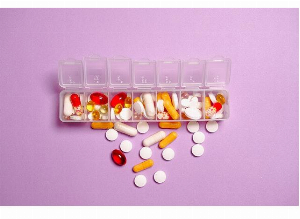Ten Ways The Planet Could Tip Into 'Hothouse Earth'
Published Aug 21, 2018

Even if humanity slashes greenhouse gas emissions in line with Paris climate treaty goals, the planet could overwhelm such efforts and irretrievably tip into a hellish 'hothouse' state, top scientists warned Monday.

Under such a scenario, Earth's average temperature would stabilise 4 or 5 degrees Celsius above pre-industrial levels, rather than the 1.5 C to 2 C (2.7 or 3.6 Fahrenheit) cap called for in the 196-nation pact. As it is, the world is struggling to curb the manmade carbon pollution that -- with only one degree Celsius of warming so far -- amplifies the likelihood and intensity of deadly heatwaves, droughts and superstorms. Simply put, climate change continues to outpace the transition to a green, clean global economy.
But that challenge will become exponentially more difficult if Earth itself gets into the act, the researchers reported in the US Proceedings of the National Academy of Sciences (PNAS).
Tipping Points
No less than ten distinct facets of what scientists call the Earth Systemcould switch from neutral or helpful to harmful, eventually dumping more CO2 and methane into the atmosphere than all human activity combined. Most have temperature "tipping points" beyond which the release of these planet-warming gases would be irreversible, at least on a human time scale.
"The feedback process becomes self-perpetuating after a critical threshold is crossed," the study said. "The Earth System may be approaching a planetary threshold that could lock in a continuing, rapid pathway towards much hotter conditions --Hothouse Earth."
Weakened Carbon 'Sinks'
Earth's forests and oceans have together absorbed more than half of carbon pollution over the last several decades, even as those emissions grew. But forests are shrinking, and oceans are showing signs of CO2 saturation, according to recent studies. These carbon sponges or 'sinks', in other words, may be weakening.
(Not so) Permafrost
Methane and CO2 trapped in the increasingly misnamed permafrost of Russia, Canada and northern Europe is roughly equivalent to 15 years of emissions at today's levels. The release of these gases -- negligible so far -- would speed global
warming and, in effect, hasten their own escape, what scientists call positive feedback. Similarly, rock-like formations in shallow ocean waters called methane hydrates -- prime suspects for episodes of rapid global warming millions of years ago -- are also vulnerable to global warming, but at what threshold remains unknown.
Forest 'Dieback'
Global warming of 3 C could condemn 40 percent of the Amazon forests to dieback, a process that would reach well into the next century, according to recent research. Accidental or land-clearing fires -- not accounted for in these models --
could hasten this destruction.
In Canada, forests that gained CO2-absorbing biomass for most of the 20th century began to lose it around 1970, due mainly to climate-related insect infestations and fires. Taken together, these forest dieoffs would release billions of tons of
carbon into the air.
Less Snow = More Heat
Dramatically shrinking polar sea ice, especially in the Arctic, means the deep blue ocean water that takes its place absorbs as much of the Sun's radiative force -- about 80 percent -- as was reflected back into space by snow's mirror-like surface. The Arctic's will likely see its first ice-free summer before mid-century, and -- in a 2C world -- could be that way one-in-four years. Over the last four decades, minimum sea ice extent has dropped by about 40 percent.

Ice Sheets, Sea Level
Experts disagree on how much global warming it will take to condemn the West Antarctic and Greenland ice sheets and how quickly they would melt, but all agree that such a tipping point exists, with estimates ranging from 1 C to3 C. The consequences for humankind would be catastrophic: Two-thirds of the world's megacities are less than 10 metres about sea level, and is much of the agricultural land that feeds them. Together, West Antarctica's and Greenland's frozen reservoirs would lift ocean by 13 metres.
Another 12 metres of potential sea level rise is locked in parts of the East Antarctic Ice Sheet that are far more susceptible to climate change than once thought.
Cascading Dominoes
All of these processes are interconnected, the authors note, and the collapse of one could trigger another. "The risk of tipping cascades could be significant at a 2 C temperature rise, and could increase sharply beyond that point."
"This cascade of events may tip the entire Earth system into a new mode of operation," said co-author Hans Joachim Schellnhuber, Director of the Potsdam Institute for Climate Impact Research. The "carrying capacity" of a 4 C or 5 C degree world, he has said previously, could drop to a billion people.
Comments
You will also like

What are the dangers associated with the over-the-counter sale of certain medicines?
Dec 19, 2020 • 6 comments

 Facebook
Facebook Twitter
Twitter

